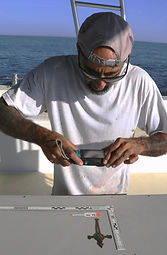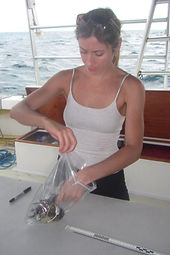
Archaeology & Documentation








Real-time example of the life cycle of an artifact:





Overview:
Under the direction of Jim Sincair, MRR employs a consistent action plan of documentation, conservation and curation of all artifacts:
-
Documentation begins at the moment of recovery for each individual artifact. GPS location data, artifact dimensions and all other relevant information is gathered, and each artifact is immediately assigned a unique serial number.
-
All data collected is entered into a proprietary database that tracks all information for each individual artifact, starting at the moment of discovery and continuing throughout all phases of conservation, curation and disposition.
-
Recovered artifacts are immediately placed into stabilization tanks. These salt water tanks provide conditions similar to those in which the artifacts were discovered, preserving artifacts until their arrival at the conservation laboratory,
-
Upon arrival to the conservation lab, each artifact undergoes conservation procedures appropriate to each class of material. Conservation ensures long-term preservation and permanent access to artifacts.
-
After proper conservation procedures have been conducted, artifacts are photographed and cataloged with all data to create a virtual collection, accessible to scholars and peers. Documentation data includes serial number, location data, dimensions, conservation methodologies, provenance information, digital imaging, and all other relevant information for each artifact.
-
Certificates of authenticity are generated, containing select documentation data unique to each artifact.
Artifact in Situ: A bronze frying pan.
The same bronze frying pan rescued from the San Jose shipwreck.
This pre-conservation photo shows the condition of the artifact after rescue, prior to conservation.
Manuel Almeida Estevez, MSc, Professor and Conservator of Underwater Archeological Materials at the University of the Arts (ISA) in Havana, Cuba, performs restoration at MRR's laboratory in Panama.
This photo shows the bronze pan after restoration.
Interactive Database:
Over the past nine years, MRR team members, Michael Perna, Jim Sinclair and Dan Porter have designed and implemented a proprietory database to track and record all collected data on each artifact from the exact moment of discovery, throughout all stages of its conservation, curation and eventual disposition. Furthermore, all data is not only collected and stored for future use by researchers, scholars, archaeologists and peer review, but also is designed to be imported into specific GIS formats.

Photography is one of the primary tools in the documentation and tracking of historic artifacts. Photo documentation begins at the time of recovery when artifacts are placed on a photo table onboard the vessel and photographed with a metric scale and an assigned numeric tag. After undergoing the appropriate conservation procedure, all artifacts are photographed again with a metric scale. All documentation photographs are added to the database for each artifact.
Documentation Photos:
Pre-conservation photos are taken at the time of recovery:



Post-conservation photos are taken at the lab after each artifact has undergone the appropriate conservation procedure:



Artifact Graphic Renderings:
Graphic renderings are just one method employed to examine and document characteristics of individual recovered artifacts. Each graphic artifact record includes a detailed rendering, as well as data detailing its individual attributes, i.e. material type, weight, dimensions, etc., a description of the conditions where it was located and recovered, and any other unique and relevant information. Below is an example of one of MRR’s artifact renderings.

Artifact comments for this graphic rendering:
Artifact recovered from the Contadora section of the San Jose site. The detailed Baroque style Gold Brooch was in relatively good condition with only slight damage to the setting where it would have presumably held some type of stone, natural pearl or gemstone. The brooch had light gorgonian concretion deposits and was found in an area with other assorted jewelry items, all in relatively the same state and condition. The area is approximately 68.5 meters in length with a basic heading of 34 degrees. Depth at low tide is under 4.5 meters and is heavily affected by wave action. The highly dynamic environment and rocky bottom conditions may possibly have been a factor in the artifacts damaged condition upon recovery.
View more artifact graphic renderings:
MRR’s founding member and director of archaeology, Jim Sinclair, MA, has overseen the conservation of collections of materials from over ten Spanish Colonial Period shipwrecks, including 500,000 individual items from a major recovery in the 1980’s.


























